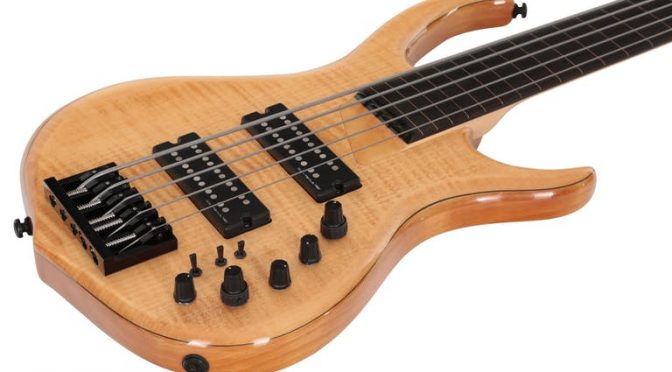Fretless Bass Strings: Flatwound or Roundwound? – Bass Practice Diary – 5th January 2020
Which make the best fretless bass strings? Flatwound or roundwound. It seems like every time I release a fretless bass video, I get asked at least one question about strings. I’ve even been asked questions like, “which flatwound bass strings do you use?” to which I then have to answer, “err… I don’t normally use flatwounds on fretless”. There seems to be this idea in the bass community that you’re going to somehow damage a fretless bass fingerboard by using roundwound bass strings. I’ve been using roundwounds since I first played a fretless bass as a teenager 20 years ago, and I’m yet to see any damage.
What’s the difference?
Flatwound strings are smooth to the touch while you can feel the coils on roundwound strings. So, if we assume that either set of strings is safe for a fretless bass neck, then the question becomes one of sound and feel. Roundwound strings have a brighter tone, especially when they are brand new, but they lose their brightness as they age. Flatwound strings are not as bright when they are new, but they do not lose their brightness so much as they age. I intentionally didn’t compare brand new strings in this video, because, I’m interested in hearing how flats compare with used roundwound strings. Do rounds really start to sound like flats as they get old?
In many ways it makes perfect sense to put flats on a fretless bass, because the lack of friction makes sliding between notes very smooth. Smooth in both sound and feel under the fingers. But the sound of flats is very much associated with a vintage bass tone. It was far more common for bass players to use flats in the 50’s, 60’s and 70’s than it is now. There’s nothing wrong with a vintage sound, it’s a great sound. But if you want something more modern, then roundwound strings are the better option.
My verdict
I didn’t give a verdict in the video. Mainly because I hadn’t yet listened back to the recordings to hear the strings side by side. Now that I’ve done it, my verdict might surprise you. On this particular bass, I prefer the flats. I’ve always used flats on this Sire Marcus Miller V7 Vintage bass. The clue is in the name. It’s a modern bass designed to be like a vintage fretless bass (a fretless Fender Jazz Bass to be specific). And to me, it just sounds right to hear this bass played with flats. However, it’s not a sound that I feel would suit my fretless Warwick Thumb SC, which is an modern fretless electric.
So, it’s not much of a conclusion I’m afraid. Before doing this experiment I was using flats on this bass and rounds on my other fretless basses. And that’s what I’ll continue to do, having heard the results side by side. I guess it’s just nice to know that my initial instincts were right. Or maybe it’s just that I’m used to hearing my basses like that so hearing roundwounds on this bass sounds odd to me.
The recording setup
For those of you who are interested, I was using an Electrovoice RE20 microphone on the speaker cabinet and I was mixing that together with a DI signal from the back of the Warwick Hellborg preamp. They were going into a Focusrite interface and then Logic Pro X. I added some light compression in Logic after recording. Other than that there are no effects used.
Both sets of strings are manufactured by D’addario. I thought it made the most sense to use the same brand for both. I have no particular loyalty or affiliation to D’addario. It was just that they were the only brand that I had both flats and rounds in my possession at the time of recording.
As I mentioned in the video, neither set of strings were new. The flats have been on the bass since I bought it. I generally don’t feel that flats need to be changed until they become visibly damaged or break. The roundwound set came off one of my fretted basses. I did clean them a bit before putting them back on the fretless.

